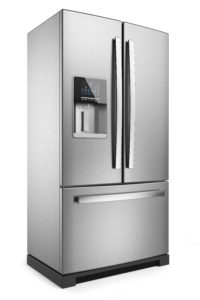
I am asked almost every time I repair a refrigerator that has stopped cooling what is the best temperature to set the fridge and freezer. Most manufacturers have a suggested temp setting for the fridge at 37 degrees. 40 degrees is the “magic” number. Below 40 degrees bacteria is not able to grow. That is why things begin to spoil sooner when the temp in the fridge is not below 40 degrees. Freezer temp is also suggested by most manufacturers at 0 degrees. There are a few manufactures that recommend -2 degrees. From what I have read this is for optimal ice production. Refrigerator Repair Homewood, Refrigerator Repair Vestavia, Refrigerator Repair Mountain Brook, Refrigerator Repair Hoover.
If your fridge doesn’t display the actual temperature you may want to get an inexpensive thermometer to ease your mind. If you discover the temps are warmer than the set temps, here are some things to check before having to call for service.
What to check if your fridge is warmer than the set temperature
1. Door seal/Door not closed
If the door seal is damaged or not creating a proper seal warm air is allowed in side and makes it difficult to maintain the set temperature. If the fridge door is not closed all the way the same thing can happen. I often find something inside the fridge not allowing the door to close all the way. Could be a large container that is too big for the shelf or even just something stored in the door thats too tall or hitting on a shelf when the door is trying to close. If the freezer door is not sealing or left open it will affect the fridge temp as well. When the freezer door is left open the warm air that is allowed in condensates then freezes. This often causes a snow like build-up of ice on all contents and surfaces of the freezer when left uncorrected for a significant amount of time. A simple inspection of the door seal may save you a service fee.
2. Condenser coils/condenser fan
Most refrigerators these days have a fan that draws room temperature air across the warm condenser to dissipate the heat produced during normal operation. Dust forms on the coils over time and can prevent air flow. Cleaning your condenser coils once a year will insure proper air flow. If you are able to access the compressor compartment of your fridge you can verify the condenser fan motor is running. I have found insulation from the surrounding housing come loose and stop the fan from turning. You will want to unplug the refrigerator before attempting to remove an obstruction from the fan. Refrigerator repair Homewood, Refrigerator Repair Vestavia, Refrigerator Repair Mountain Brook, Refrigerator Repair Hoover.